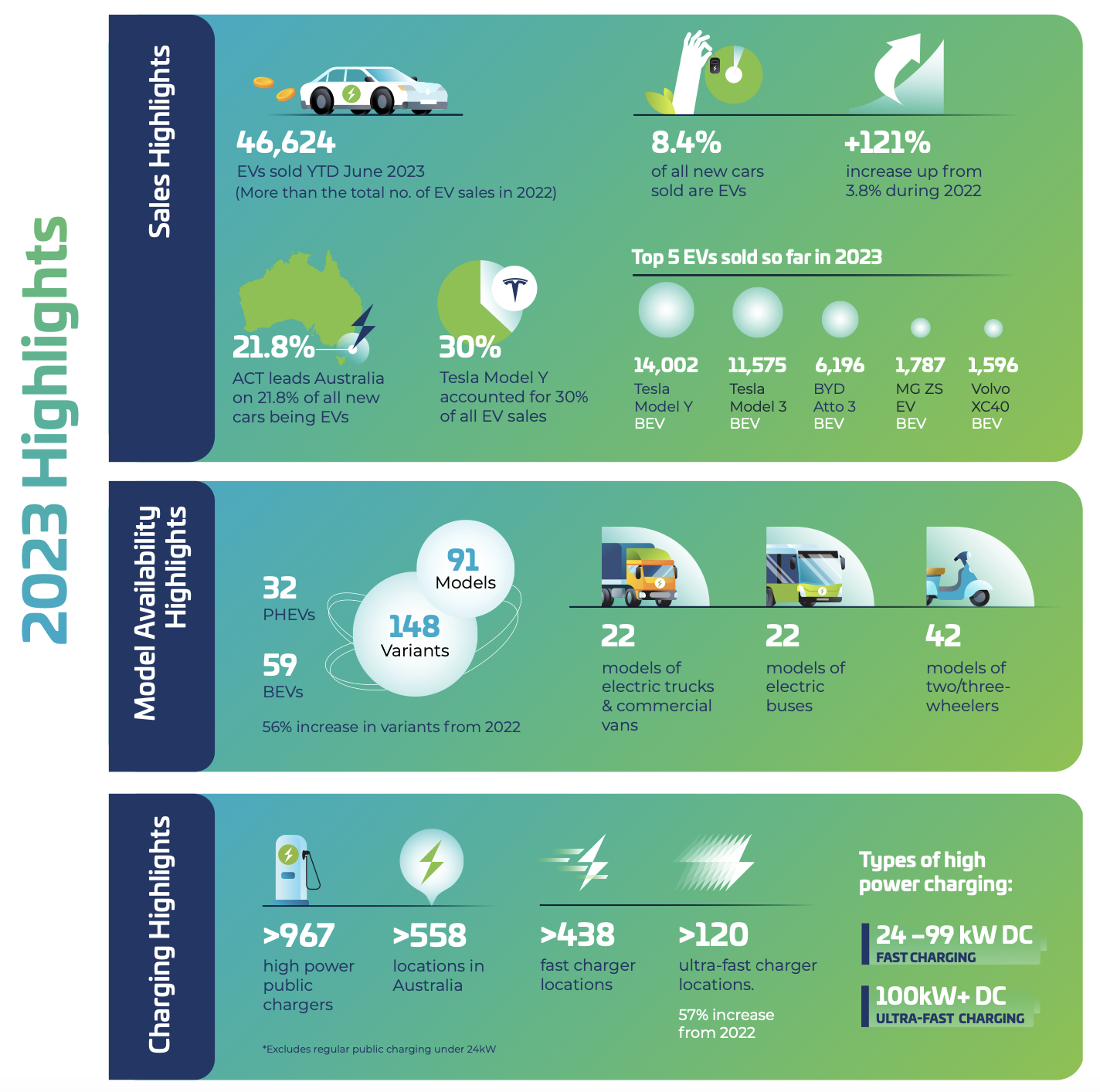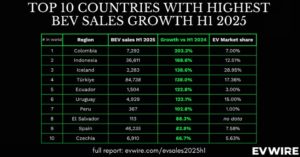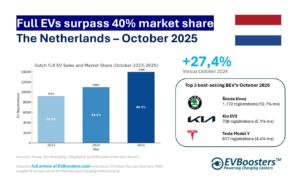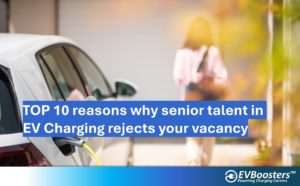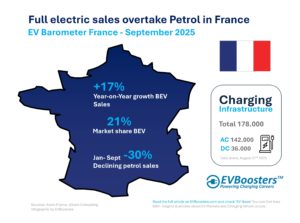The first half of 2023 witnessed an extraordinary surge in EV sales, outpacing the entirety of 2022 and marking a transformative shift in consumer preferences. The numbers are staggering: by June 2023, a total of 46,624 electric vehicles had been sold, a remarkable 269% increase compared to the same period the previous year. This remarkable surge underscores the rapid adoption of EVs in Australia.
The Australian automotive market is undergoing a notable transformation, with electric cars now accounting for a significant 8.4% of all new vehicle sales. This impressive market share reflects an astonishing 120.5% rise compared to the entire year of 2022. This shift highlights an evolving consumer mindset, increasingly favoring environmentally conscious and sustainable mobility solutions.
While the current growth trajectory is promising, Australia’s commitment to achieving its climate targets demands a more accelerated transition to EVs. The ambitious aim of having over 50% of new car sales as EVs by 2030 necessitates approximately 1 million EVs on the roads by the close of 2027. Such an endeavor requires a cohesive partnership between governmental bodies, the industry, and consumers.
A significant factor influencing the pace of EV adoption is the availability of diverse and affordable models. Implementing a New Vehicle Efficiency Standard, aligned with international benchmarks, is paramount for fostering a competitive environment and stimulating a wider range of EV options. By doing so, Australia can bolster its EV supply and hasten the transition towards sustainable transportation.
While Australia’s progress is commendable, a global comparison of EV adoption rates reveals room for growth. Lagging behind several international markets, Australia must adopt a comprehensive approach to secure a prominent position in the global EV race. Supportive government policies and a holistic strategy are crucial to narrowing this gap.
Driving the surge in Australia’s EV market are dominant models such as the Tesla Model Y, Tesla Model 3, and BYD Atto 3, which collectively account for a significant 68.1% market share. This diverse range of best-selling EVs underscores the expanding choices available to Australian consumers, signifying a growing appeal for electric mobility.
A robust charging infrastructure is vital for widespread EV adoption. With 558 high-power public charging locations as of June 2023, Australia has experienced a commendable 57% increase from the previous year. Continued investment and expansion of these networks are crucial for alleviating range anxiety and propelling EV adoption.
Incentives and supportive regulations play a pivotal role in shaping the EV landscape. While various Australian states have implemented measures such as rebates, loans, and tax incentives to encourage EV adoption, harmonisation of rules and regulations across the nation is essential to create a seamless environment for EV growth.
As the EV ecosystem advances, emerging technologies like Vehicle-to-Grid (V2G) hold transformative potential. Enabling EVs to both consume and contribute power to the grid, V2G technology can revolutionize energy dynamics. Australia’s impending embrace of V2G could position EVs as active participants in supporting the energy grid, thereby accelerating the shift towards renewable energy sources.
Australia’s electric car market is experiencing an unprecedented surge, signaling a transformative shift towards sustainable transportation. While significant strides have been made, challenges like supply constraints and regulatory coherence remain. Through a robust policy framework, accelerated charging infrastructure development, and the integration of cutting-edge technologies like V2G, Australia can confidently steer towards a cleaner, more sustainable automotive future. The collaboration between government, industry, and consumers will be pivotal in realising the nation’s EV aspirations and driving a greener transportation landscape.
Source: State of Electric Vehicles | EV Council
